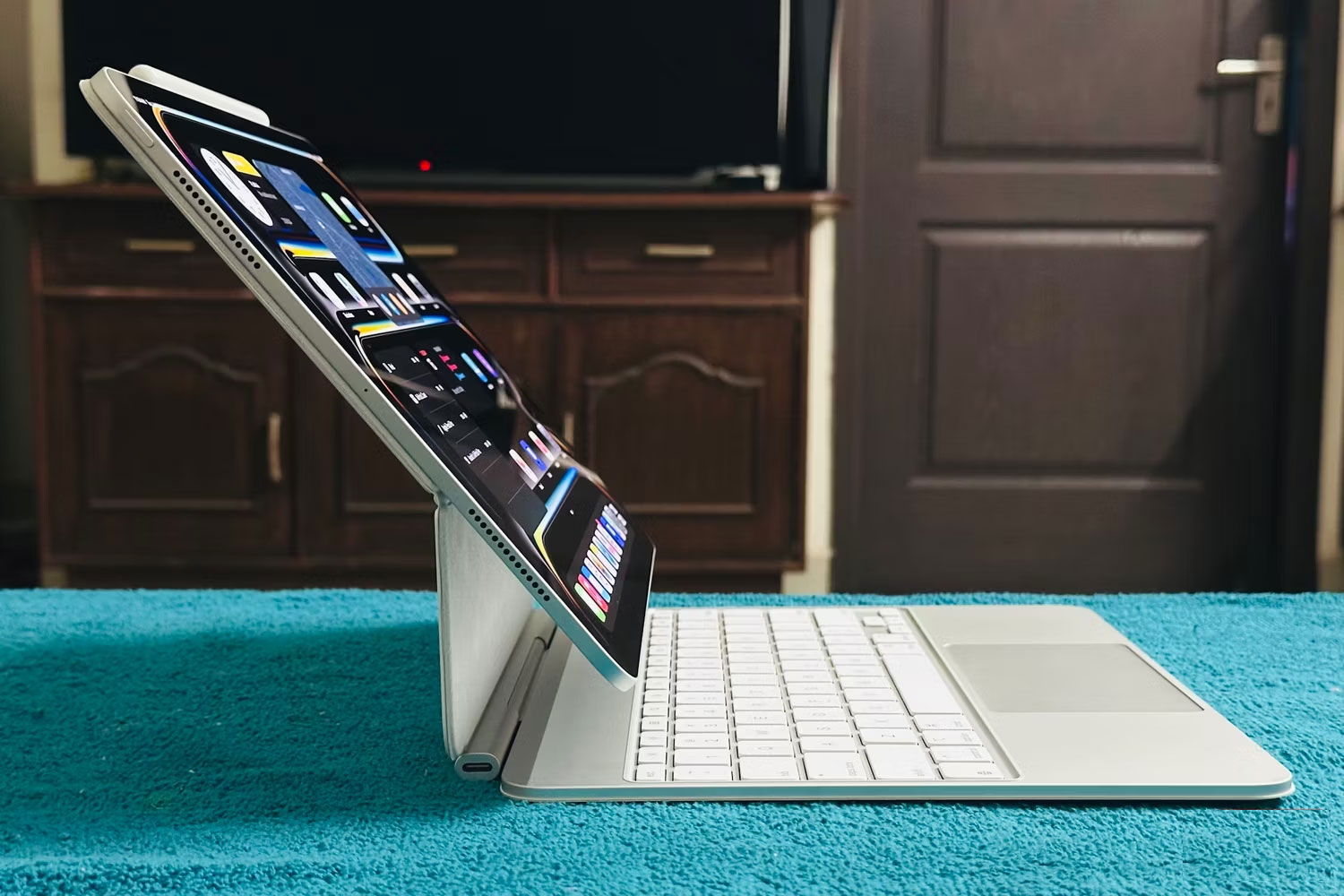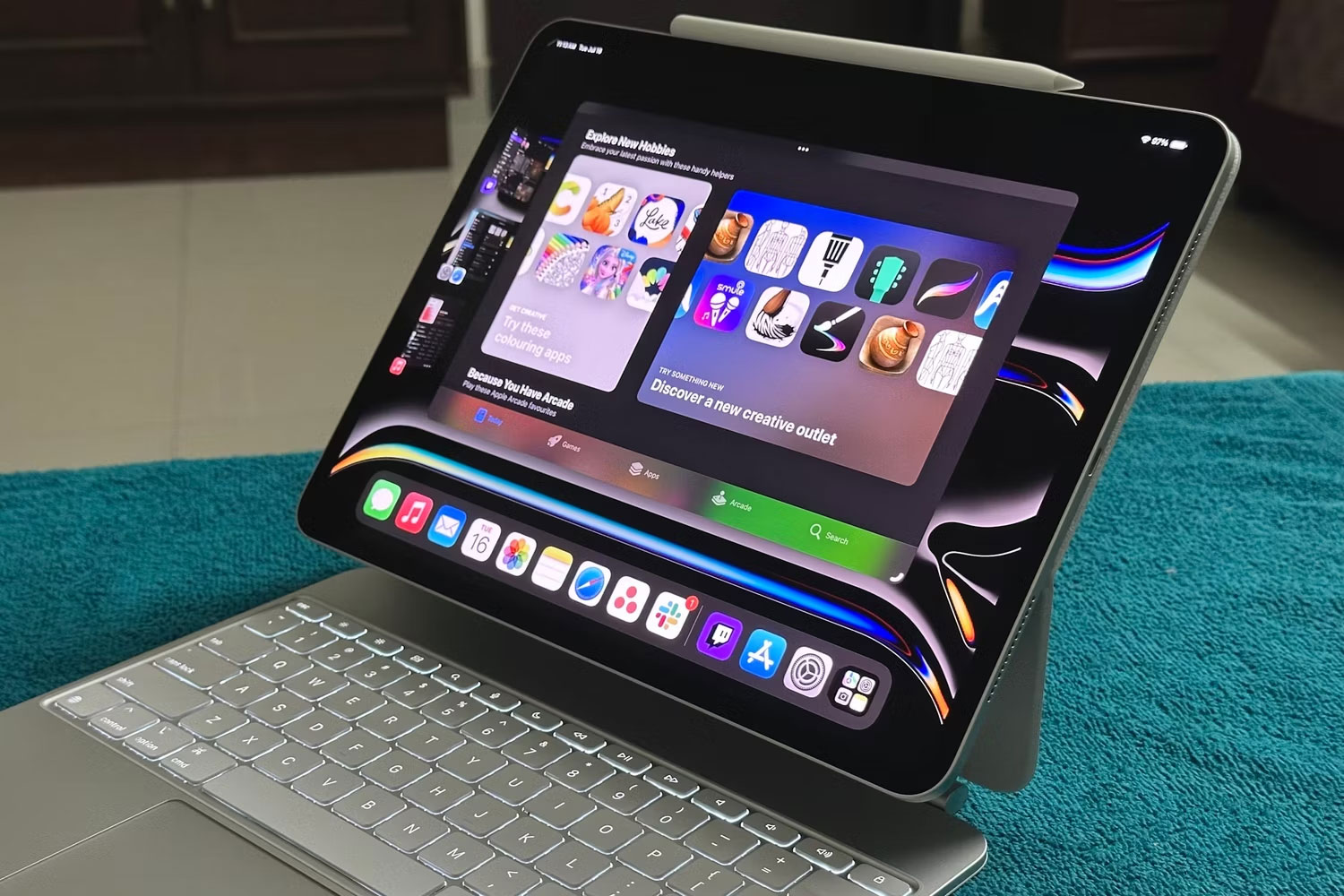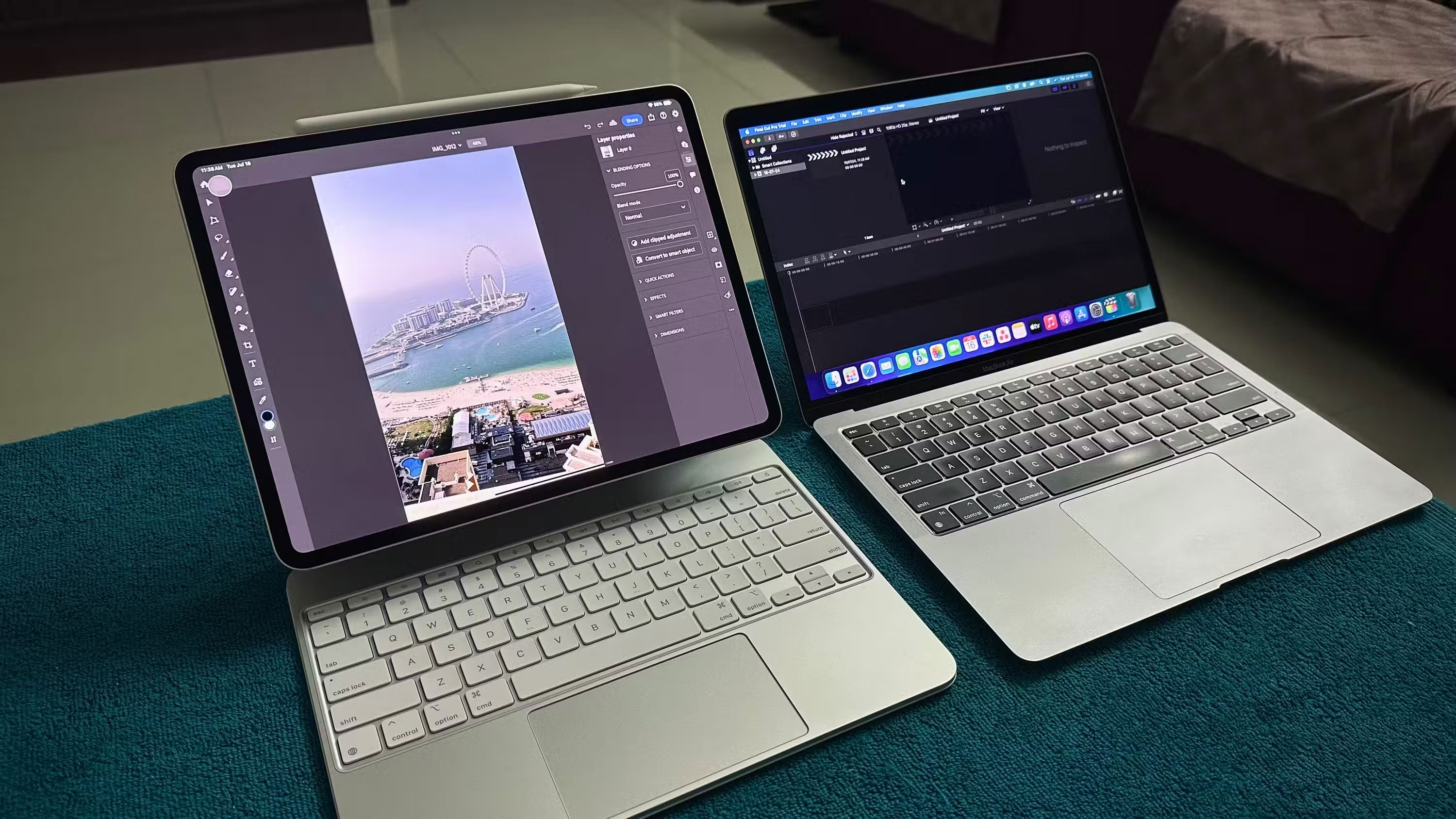The biggest disadvantages when replacing MacBook with iPad Pro
1. Limited viewing angle of Magic Keyboard

The first thing you notice after attaching your iPad Pro to the pricey Apple Magic Keyboard is that the viewing angle is quite limited. Many people often use their laptops while lying on the sofa, but in this case, the flexibility of the folding lid on the MacBook is gone.
Magic Keyboard offers good viewing angles when placed on your lap or on a table. However, if you tend to use your laptop elsewhere, such as on your bed or the couch, know that you can't push the iPad back further than what you see in the image above.
2. Poorer battery life
iPad Pro offers decent battery life for a tablet. Apple rates it for up to 10 hours of web browsing. However, this is a lot less than what the MacBook Air M1 offers - up to 10 hours of web browsing or 18 hours of video playback.
Since Apple switched to using its in-house silicon chips, MacBooks have offered incredible battery life. Unfortunately, Apple decided to make its iPad Pro thinner in 2024 instead of installing a larger battery to close the gap.
3. Stage Manager is a step backwards

Stage Manager is Apple's half-hearted attempt to improve the multitasking experience on iPadOS. Certainly, it is more advanced than Split View and Slide Over in running multiple applications at the same time on iPad.
However, it simply cannot match the native app window management feature in macOS. Stage Manager is also available on macOS, but immediately feels inferior when starting to use it.
For starters, you can't resize windows and position them to your liking. You are limited to Apple's preset layouts and locations. iPadOS also limits you to only 4 apps at a time if there is no external display connected to the iPad.
4. File management is cumbersome
Finder makes it easy to manage all the files on your Mac. Unfortunately, you're stuck with Apple's Files app in iPadOS, which is quite limited. Because, unlike Finder on Mac, the Files app doesn't have full access to the iPad's file system.
Additionally, the Files app does not allow selecting the desired app whenever trying to open a file that is not supported; there is no "Open with" option. It's also not possible to sort files by type or batch rename files so they can be found easily.
In general, think of Files as an app to store all your files; it is not a system-wide file management utility like Finder.
5. Lack of desktop applications

Apple is trying its best to push the iPad as a laptop replacement, but at the end of the day, iPadOS is still a super mobile operating system. Users need real desktop apps before they can rely solely on the iPad as their primary computing device.
In 2023, Apple introduces Final Cut Pro and Logic Pro for iPad. But from my experience using Final Cut Pro on both iPad and Mac, it's safe to say that the iPad version is essentially a stripped-down product.
For example, if you are a professional, you will have difficulty color grading using Final Cut Pro on iPad. It also lacks some features available on the Mac version, like Object Tracker, Speed Ramping, Optical Flow and Scrolling Timeline.
Likewise, while Lightroom for iPad closely resembles the desktop app, Photoshop is a stripped-down version, lacking vector support, the Pen tool, and many filters and effects.
6. No third-party browser extensions

Many people like to use Safari on iPhone but would rather use Chrome on computers, including MacBooks. One of the main reasons for that is extension support. Safari's extension library is very limited, even on macOS.
After switching to iPad, users quickly started missing out on some of the best useful Chrome extensions. That's because Chrome and other third-party browsers for iPad don't support extensions at all. The only option is to use Safari if extensions are needed.
More importantly, there is no similarity between the Safari extensions offered on iPadOS and macOS. For example, the Grammarly extension works differently than the extension available for Safari on macOS. It doesn't look like a desktop browser extension, even though Apple calls Safari for iPad a desktop browser.
 Canva Pro features make subscribing worth it
Canva Pro features make subscribing worth it How to stream PS5 gameplay to Discord (using PS Remote Play)
How to stream PS5 gameplay to Discord (using PS Remote Play) 7 files and folders Windows can delete to free up space
7 files and folders Windows can delete to free up space How to set a blank name Among Us, not leave a name in Among Us
How to set a blank name Among Us, not leave a name in Among Us Is it worth the investment to play 4K games?
Is it worth the investment to play 4K games? Why Fotor is our favorite affordable AI photo editing app
Why Fotor is our favorite affordable AI photo editing app